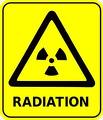Fukushima: Nuclear Apologists Play Shoot the Messenger on Radiation
Nuclear Industry's Vociferous Attacks on its Critics

Article originally published in April 2011
TWENTY-FIVE years after Chernobyl, many billions of dollars are at stake if the Fukushima reactor meltdowns cause the so-called “atomic renaissance” to halt or even slow down. This is evident from the nuclear industry’s vociferous attacks on its critics.
We see this especially in Australia, where the industry is conducting a whatever-it-takes propaganda campaign to ensure that nothing stands in the way of vast profits to be made from continuing to export uranium; from the plan to establish a radioactive waste dump at Muckaty Station in the Northern Territory; and from the industry’s desire to dot the continent with reactors.
Proponents of nuclear power – including George Monbiot, who has had a mysterious road-to-Damascus conversion to its supposedly benign effects – accuse me and others of ”cherry-picking” data and overstating the health effects of radiation. Yet by reassuring the public that things aren’t too bad, Monbiot and others misrepresent and distort the scientific evidence of the harmful effects of radiation exposure.
Their first piece of disinformation is to confuse the effects of external and internal radiation. The former is what populations were exposed to when atomic bombs were detonated over Hiroshima and Nagasaki in 1945.
Internal radiation, by contrast, emanates from radioactive elements that enter the body by inhalation, ingestion, or skin absorption. Hazardous radioactive elements being released in the sea and air around Fukushima accumulate at each step of various food chains (for example, into algae, crustaceans, small fish, bigger fish, then humans; or soil, grass, cow’s meat and milk, then humans). Entering the body, these elements – called internal emitters – migrate to specific organs such as the thyroid, liver, bone, and brain, continuously irradiating small volumes of cells with high doses of alpha, beta and/or gamma radiation, and over many years often induce cancer.
Further, many remain radioactive in the environment for long periods, posing danger for future generations.
The grave effects of internal emitters are of the most profound concern at Fukushima – as indeed they continue to be at Chernobyl. It is erroneous and misleading to use the term ”acceptable levels of external radiation” in assessing internal radiation doses. To do so is to propagate inaccuracies and to mislead the public worldwide and journalists who are seeking the truth about radiation’s hazards.
Further, nuclear industry proponents assert that low doses of radiation produce no ill effects and are therefore safe. But, as a US National Academy of Sciences report concluded in 2007, no dose of radiation is safe, however small, including background radiation; exposure is cumulative, so that each dose (whether, for example, from a medical x-ray or from passing through the whole-body scanners soon to be introduced in Australian airports) adds to an individual’s risk of developing cancer during his or her lifetime.
Regarding Chernobyl, various seemingly reputable groups have issued differing reports on the morbidity and mortalities resulting from the 1986 radiation catastrophe. The World Health Organisation in 2005 attributed only 43 human deaths directly to the disaster and estimated an additional 4000 fatal cancers. In contrast, a 2009 report published by the New York Academy of Sciences comes to a very different conclusion. Its scientist authors estimated the number of deaths attributable to the Chernobyl meltdown at about 980,000.
Monbiot wrongly dismisses the report out of hand as worthless, but to ignore and denigrate an entire body of literature is arrogant and irresponsible.
Finally, there is widespread confusion about the roles of the World Health Organisation and the International Atomic Energy Commission. Monbiot expresses surprise that a UN-affiliated body such as WHO might be under the influence of the nuclear power industry, causing its reporting on nuclear power matters to be biased. And yet that is precisely the case.
In the early days of nuclear power, WHO issued forthright statements on radiation risks, such as its 1956 warning: ”Genetic heritage is the most precious property for human beings. It determines the lives of our progeny, health and harmonious development of future generations. As experts, we affirm that the health of future generations is threatened by increasing development of the atomic industry and sources of radiation.”
After 1959, the organisation made no more statements on health and radioactivity.
What happened?
On May 28, 1959, at the 12th World Health Assembly, WHO drew up an agreement with the International Atomic Energy Agency. A clause of this agreement says the WHO effectively grants the right of prior approval over any research it might undertake or report on to the IAEA – a group that many people, including journalists, think is a neutral watchdog, but which is, in fact, an advocate for the nuclear power industry. Its founding papers state: ”The agency shall seek to accelerate and enlarge the contribution of atomic energy to peace, health and prosperity through the world.”
The WHO’s subjugation to the IAEA is widely known within the scientific radiation community, something which Monbiot chose to ignore. But it is clearly not the only matter on which he is ignorant, after his recent apparent three-day perusal of the vast body of scientific information on radiation and radioactivity. The confusion that he and other nuclear industry apologists sow about radiation risks is very similar to the way that the tobacco industry propounded misinformation and lies about the true effects of smoking.
Despite their claims, it is they, not the ”anti-nuclear movement”, who are ”misleading the world about the impacts of radiation on human health”.
Dr Helen Caldicott is the founding president of Physicians for Social Responsibility and the author of seven books, including Nuclear Power is Not the Answer.

